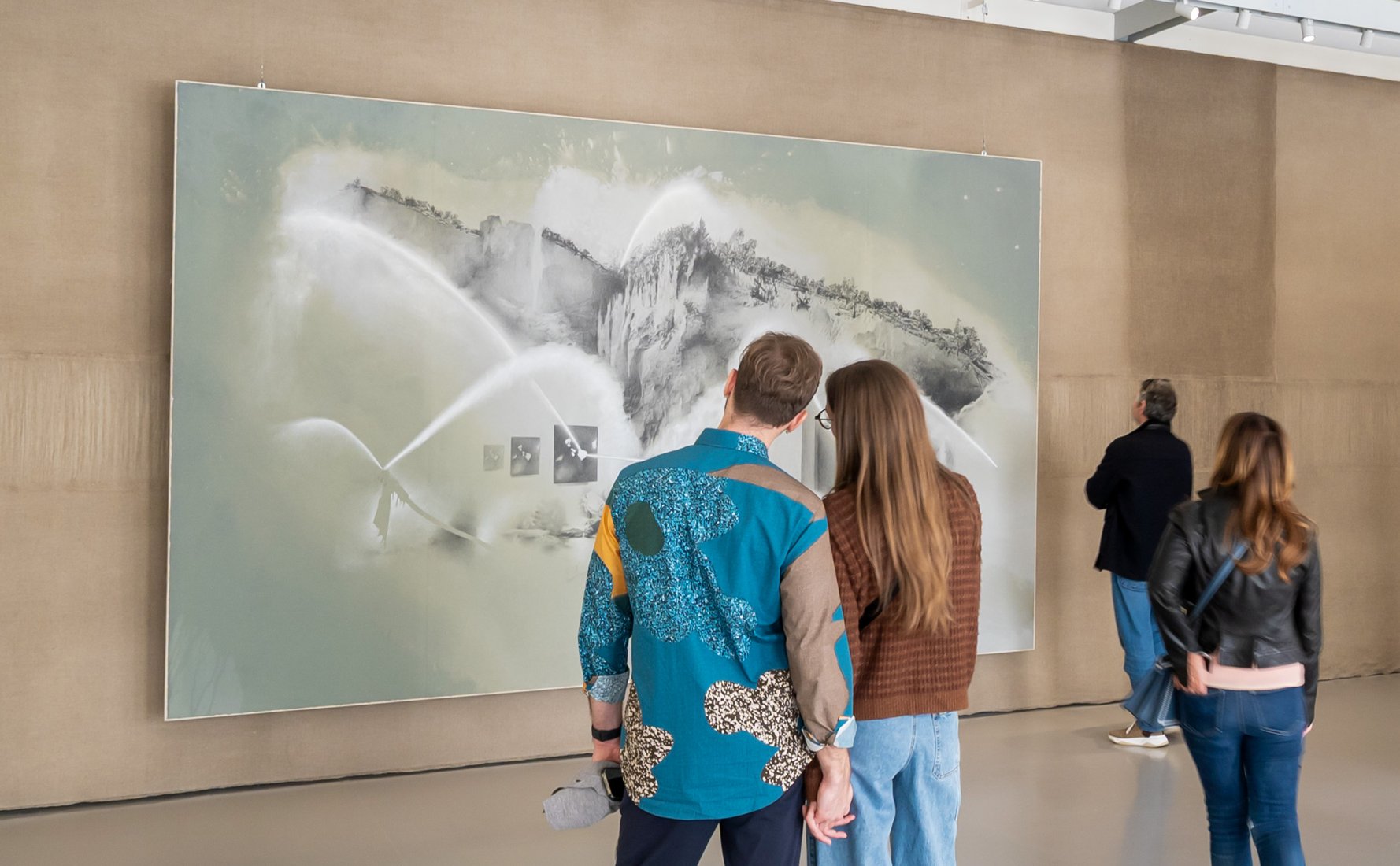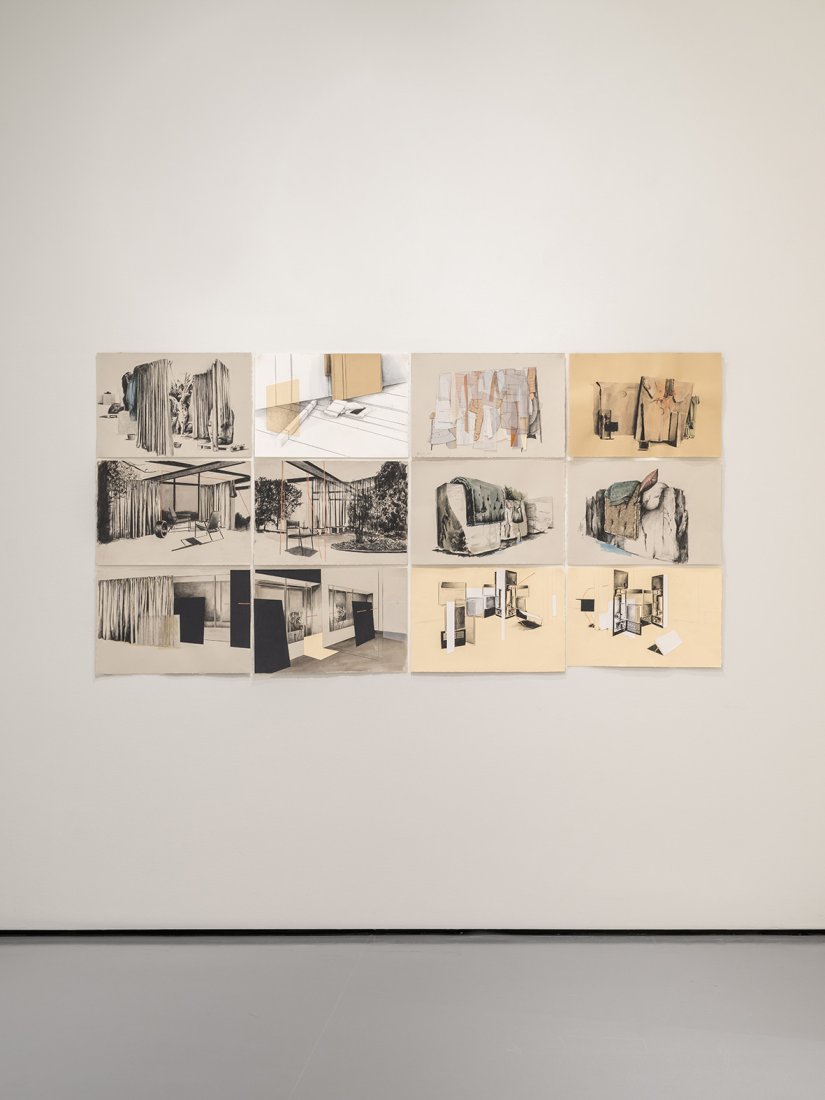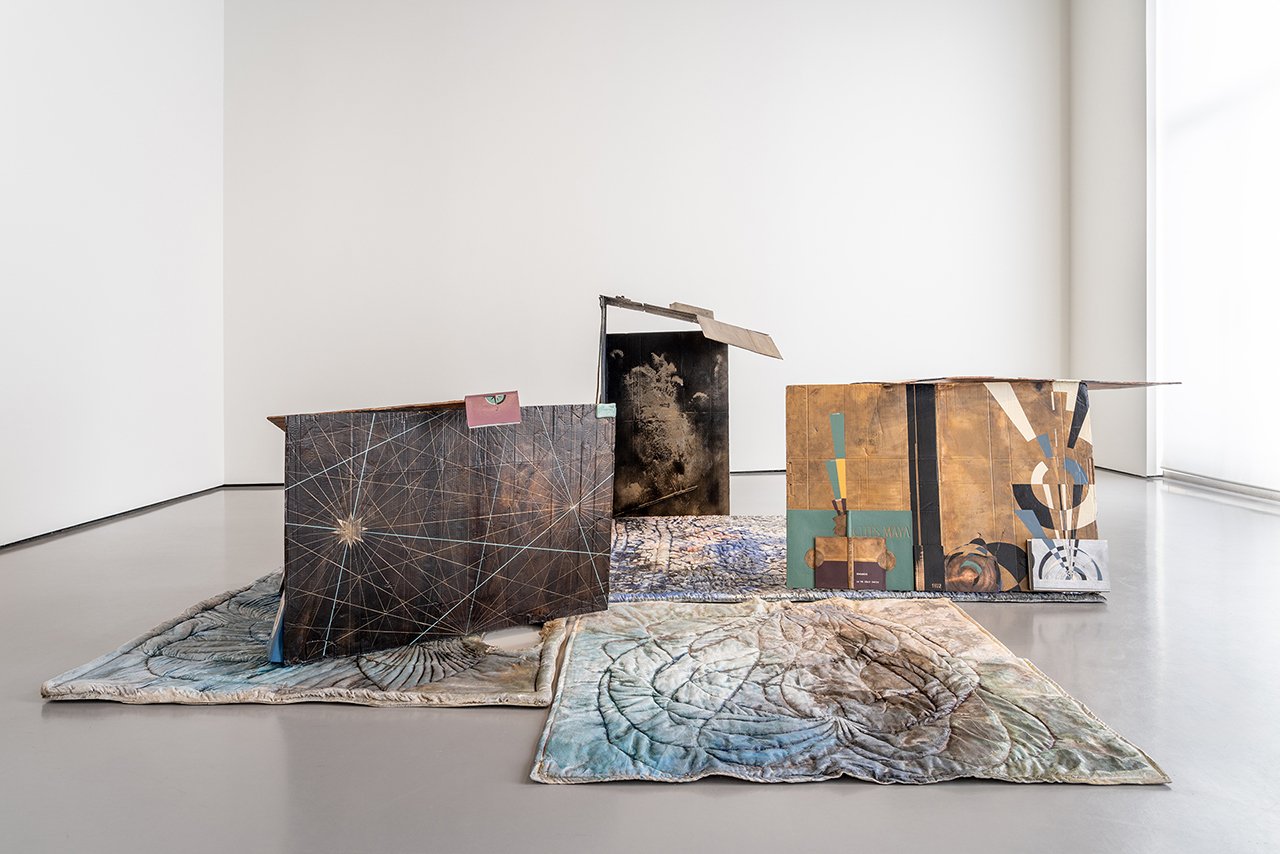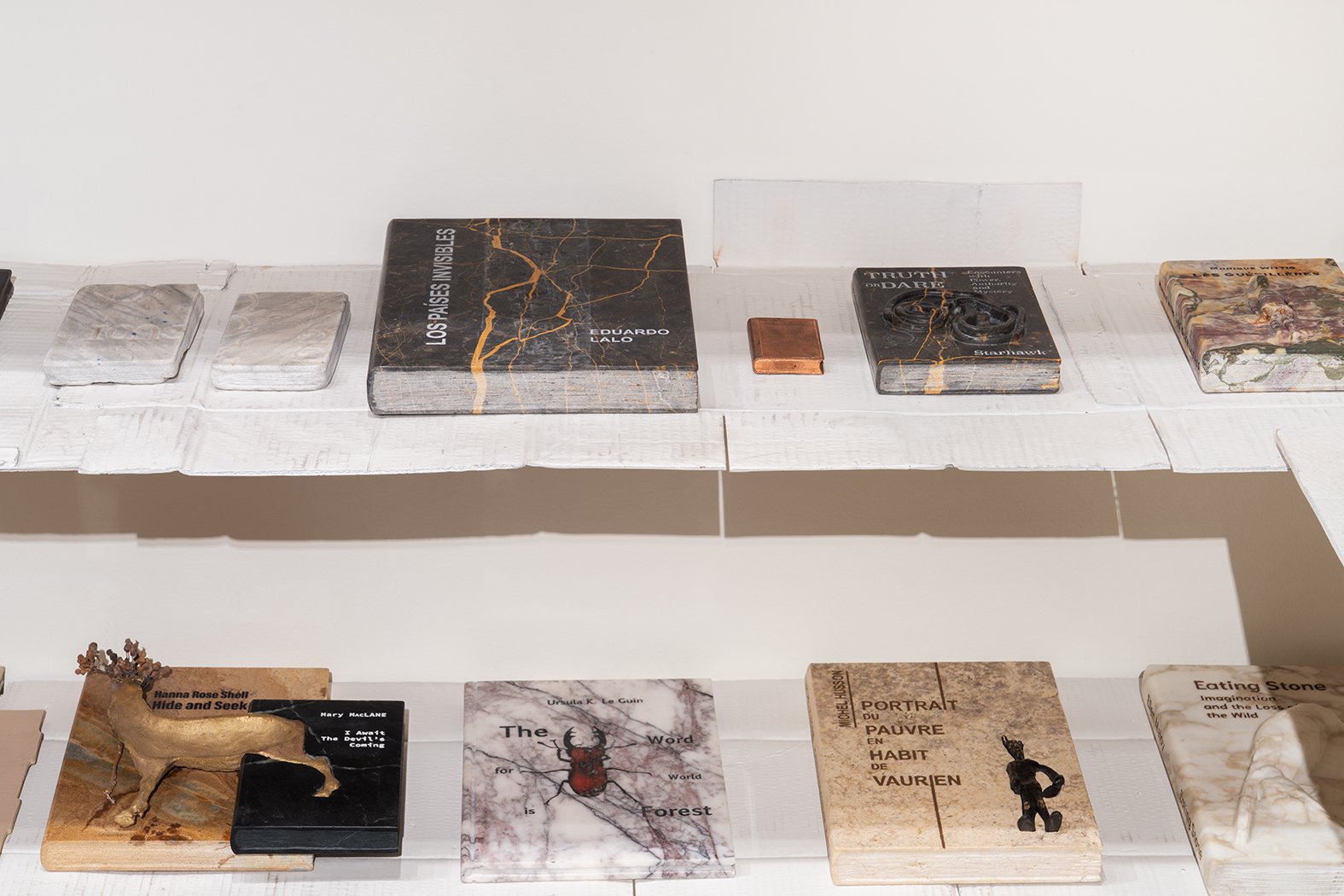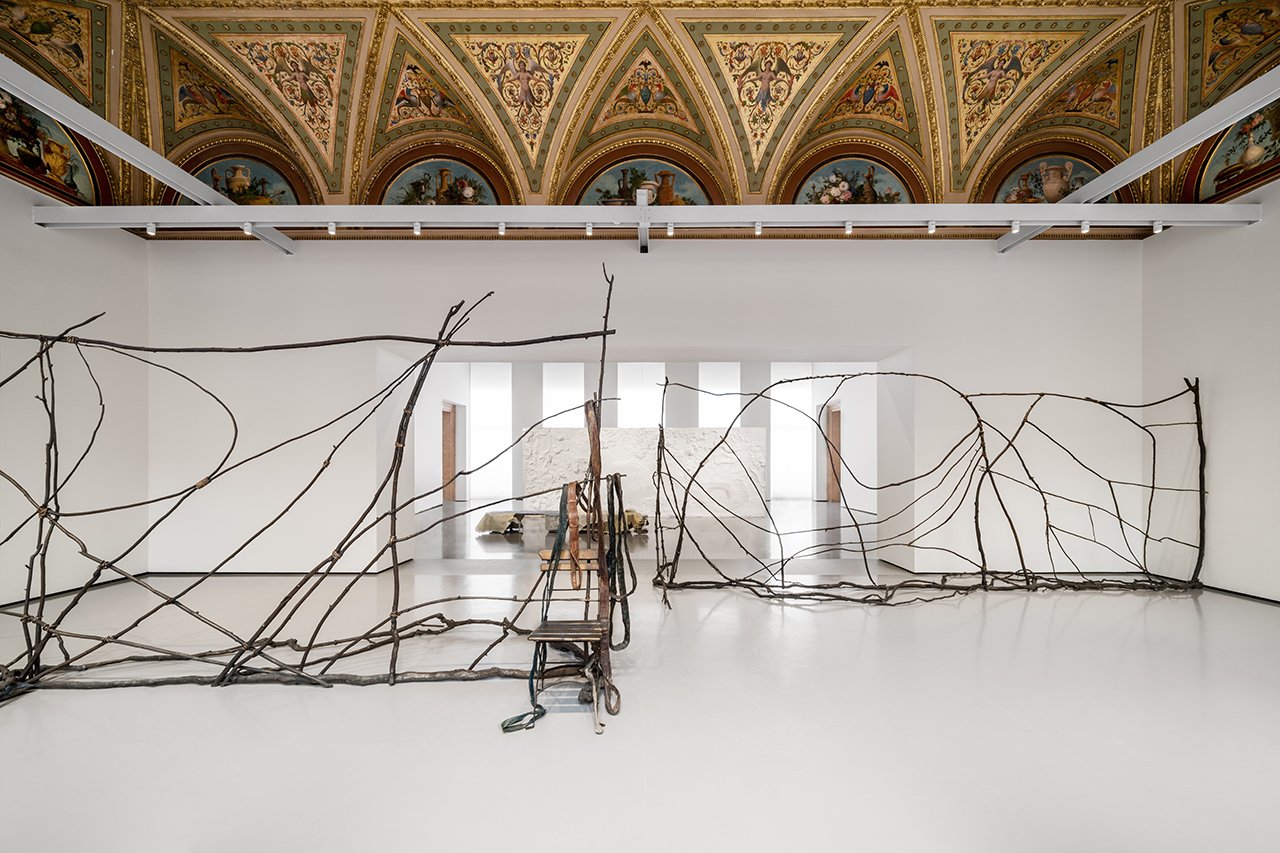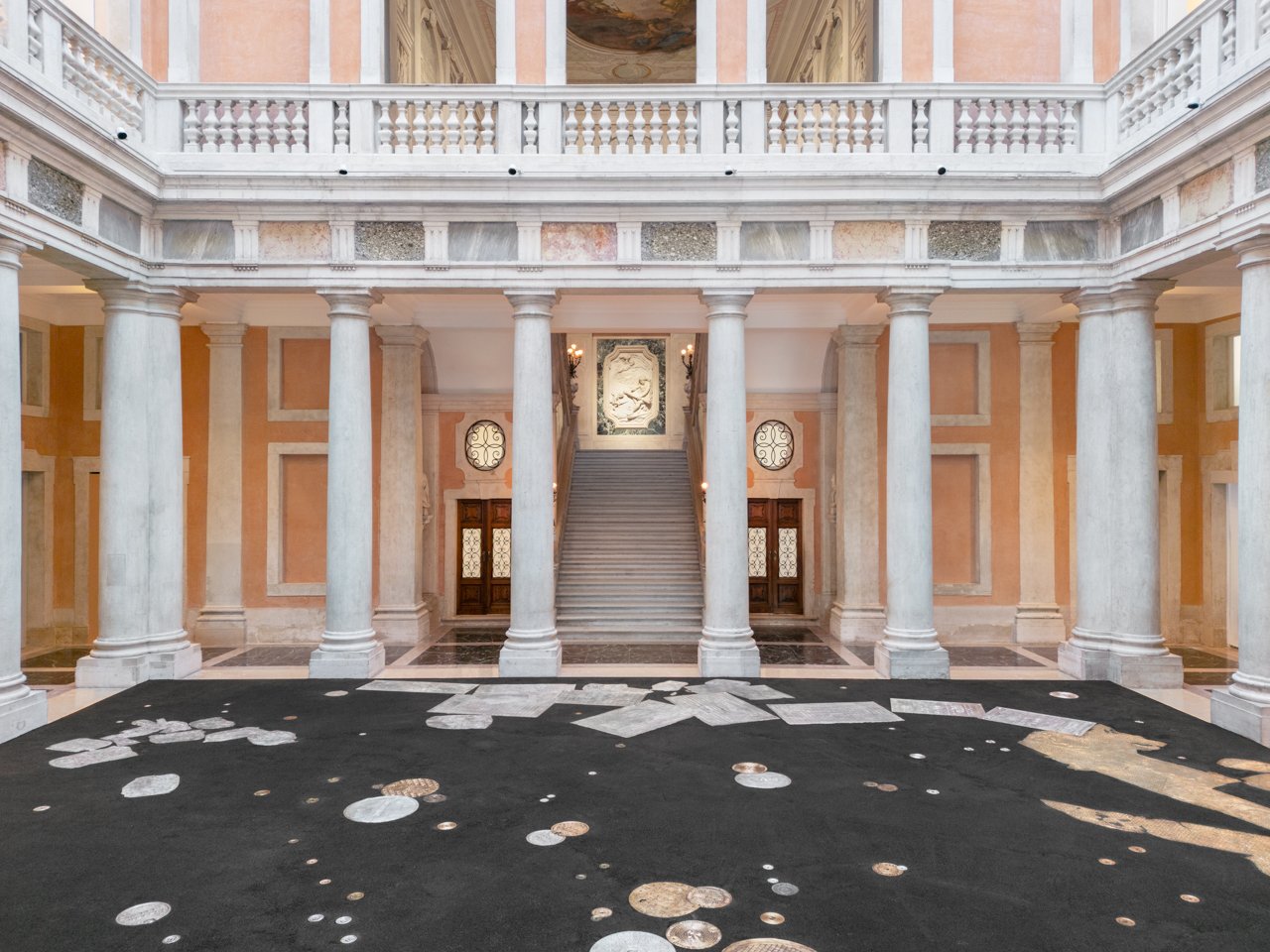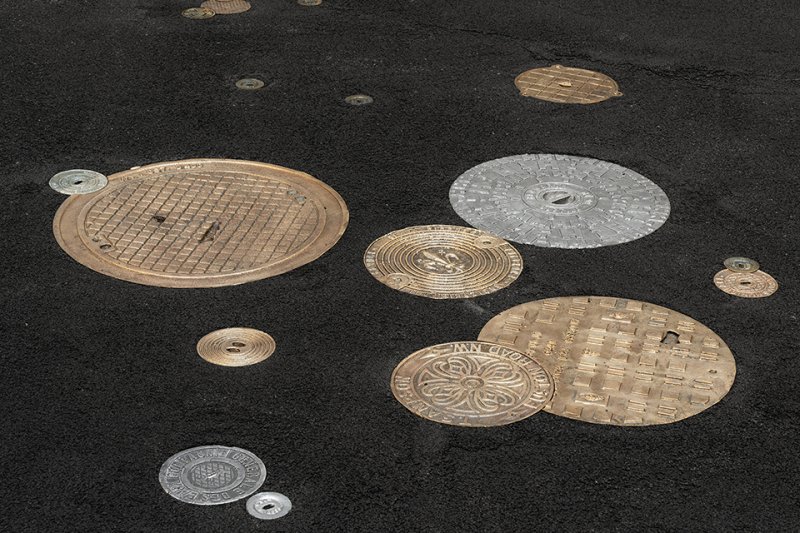
"On the Missing Majority" by Barbara Casavecchia
Trouvé often describes her work as an ecosystem, an organism within which the elements are always interconnected, mirroring and responding to each other.
[…]
In Venice, Trouvé deploys her full archive of traces, her own material inventory of found objects and their cast Doppelgänger and invites viewers to enter her own lithic and metallic ages, whose non-linear chronologies and temporalities coexist, as in memories and dreams. These temporal layerings start on the ground floor, where the grand marble floor of Palazzo Grassi has been covered in asphalt, a natural material instrumental to human deambulation, so ubiquitous and all-encompassing that we tend to forget its origins. In fact, asphalt is a liquid hydrocarbon oozing from rocks formed from the remains of microscopic algae and other living organisms, mostly during the Carboniferous period when gigantic rainforests and swamps covered the Earth. It was one of the first building materials ever used, in Mesopotamia and Sumeria and also in China, and has never gone out of use. Blacktop surfaces protect the global population, two thirds of whom now live in cities, from coming into direct contact with the unstable and destabilizing humidity of the soil.
[…]
Trouvé has dotted her dark expanse of asphalt with manholes collected from all over the world. It is only when observed from above, from the atrium’s high balcony, that they appear as planets of an unknown galaxy, in a dizzying, disorienting inversion of sky and earth. During the Venetian acqua alta (high water), it is from manholes that water gushes out, rather than being swallowed up, taking by surprise our pretensions to control the natural elements, or to separate ourselves from them. Like Gaia itself, our bodies are made up of more than two-thirds water, which passes through us every day, through orifices and pores, to rejoin the great mass of fluids tumultuously rippling across the planet. The hydro-feminist philosopher Astrida Neimanis’s theory that we are all bodies of water, in a fluid connection with all natural bodies, based on dissolution, transformation, and the seamless transition from one state to another, is particularly apposite in Venice, where it can be understood with an immediacy born out of the daily experience of a city that coexists with a lagoon, its tides, currents, waves, fogs, and floods.
In Trouvé’s inverted, lithified, bituminous cosmos, the hard surface, water-repellent by nature, is perforated by portals to the liquid universe flowing underground. It’s a powerful vision that throws you off balance. Trouvé often describes her work as an ecosystem, an organism within which the elements are always interconnected, mirroring and responding to each other. Here, she seems to be imparting to us a parable on how to be porous to change, learning to absorb and adapt to it. Some urban planners argue that a good solution to prevent water from flowing too violently over hard surfaces would be to design “sponge cities” equipped with “rain gardens” which collect and filter rainwater, as Venetian wells have done for centuries. Like Trouvé, Neimanis challenges us to think relationally: “Just as the deep oceans harbor particulate records of former geological eras, water retains our most anthropomorphic secrets, even when we would rather forget. Our distant and more immediate pasts are returned to us in both trickles and floods.” (11)
11. Astrid Neimanis, «Or, On Becoming a Body of Water,» in Henriette Gunkel, Chrysanthi Nigianni, and Fanny Söderbäck, eds. Undutiful Daughters: New Directions in Feminist Thought and Practice (New York: Palgrave Macmillan, 2012), 87.
Excerpts from the catalogue of the exhibition "Tatiana Trouvé. The Strange Life of Things" at Palazzo Grassi
